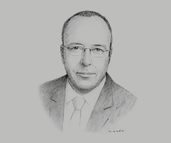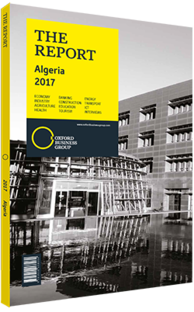Lazhar Bounafaa, CEO, Groupe Hôtellerie Tourisme Thermalisme (HTT): Interview

Interview: Lazhar Bounafaa
How would you assess the capacity of the hotel industry as it currently stands?
LAZHAR BOUNAFAA: The current capacity of the hospitality sector in Algeria is estimated at 120,000 beds, offered by 1184 hotels, of which 9000 beds fall into the four or five-star category. HTT’s current total capacity is 30,000 beds, and our objective for 2018 is to reach 32,500 with the opening of several new developments, mostly in the mid-tier segment. This range offers room for growth, since most of the existing hospitality chains – El Aurassi, Sofitel, Mercure – compete in the premium segment. The industry needs to widen its offerings to all types of activities, including seaside, urban, Saharan and business, among others.
The National Tourism Development Plan aims to add 500,000 hotel beds by 2030. Since 2015, 2500 new tourism projects are under way, of which 1000 are tourist complexes, villages or hotels. These will add 120,000 beds to the national capacity by the end of 2018. The strategy relies on seven “pillars of excellence” which also focus on integrating partnerships between tourism and hospitality infrastructures in each region.
What are the main tourism projects under way?
BOUNAFAA: The years 2017 and 2018 are dedicated to the development and modernisation of 70 existing projects, including hospitality units, seaside villages and balneology resorts, at an investment cost of over $1bn. The tourist infrastructure of Zeralda and Andalouses will benefit from a brand new thalassotherapy centre, while the thermal stations of Sidi Fredj and Chellala are both set to see new hotel developments, and several new holiday villages are to be found across the country.
How can tourist numbers be increased, and what can be done to attract greater foreign investment?
BOUNAFAA: In order to increase the number of visitors, we need to apply the following key measures. First, there should be an upgrade of our hotel infrastructure in accordance with international standards. Services offered to clients need to be diversified by promoting innovative products focused on specific tourism areas, including desert trips, urban tours and balneology. Second, with regard to human resources, employees involved in customer relations – maids, bartenders and receptionists, for example – should be properly trained to do so. Senior managers also need to receive more specific training. Third, some hotel structures could benefit from partnering with international chains in order to upgrade the level of quality and better integrate Algeria into the global market. In this sense, sector decision makers should strengthen their relationships with foreign travel agencies and tour operators. Promoting the image of Algeria as a tourist destination is central to boosting visitor numbers.
As for attracting more foreign investments, Law No. 16-09 issued in August 2016 offers a number of financial, tax and land advantages to investors. For example, it exempts investment in tourist projects from Customs duties and value-added tax during the building phase.
What is the potential of the thermal segment?
BOUNAFAA: Algerian thermal sources represent an important asset on which we must capitalise. The country holds 202 water sources with scientifically proven medical benefits, and there are more than 80 thermal stations in Algeria. Given this potential, the segment is ideally placed to play a key role in the sector’s development strategy, by targeting both national and international markets. In addition, among the numerous thermal stations across the country, eight are designated by the National Social Insurance Fund, which can provide added value for tourists. Since 1990 thermal facilities have been adapting their provision to rehabilitative care, with the segment attracting 300,000 patients per year. The modernisation programme created in 2015 focused on thermal facilities’ plans to rank Algeria as a destination of excellence for balneology.
You have reached the limit of premium articles you can view for free.
Choose from the options below to purchase print or digital editions of our Reports. You can also purchase a website subscription giving you unlimited access to all of our Reports online for 12 months.
If you have already purchased this Report or have a website subscription, please login to continue.

